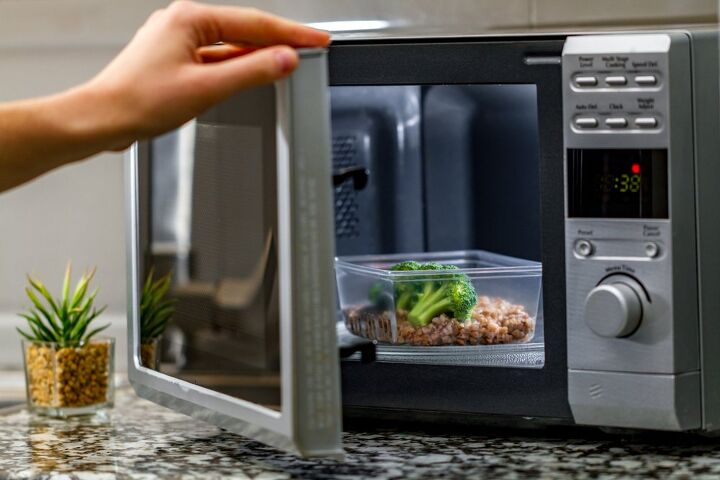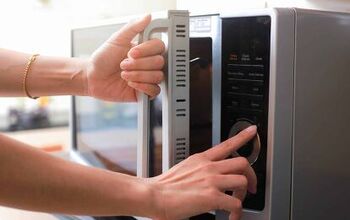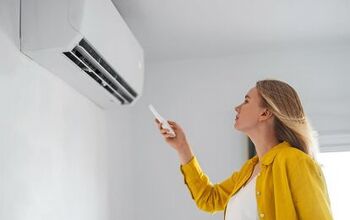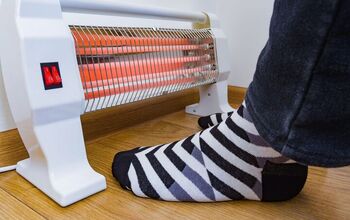How Many Amps Does A Microwave Use?

You can find at least one microwave in everyone’s home nowadays. But the microwave oven was not really a thing until the 80s. In fact, only a quarter of homes in America had a microwave oven in 1986, and by 2008 that number was up to 95%. But how much do you really know about your microwave oven?
Microwaves use an average of 10 amps, but 1,000-watt microwaves use 8.3 amps. A 700-watt amp only uses 5.8 amps, on average. Most 20-amp circuits can handle any microwave because they rarely exceed 20 amps.
But How Many Amps Does It Really Use?
Interestingly, the manufacturers and electricians will both tell you that you need at least a 15- to 20-amp circuit. The reason for this is that even though your microwave oven puts out 1,000 watts, that does not mean it only uses that much. In fact, a 1,000-watt microwave oven will typically use about 1,700 watts.
To get the amperage, you have to divide the watts (1,700) used by the volts (120). 1,700 divided by 120 is 14.2 amps so your microwave oven will need at least a 15-amp circuit all by itself. However, if anyone plugs anything else into that circuit, you are going to be tripping the breakers often. It is better to use a 20-amp circuit to be on the safe side.
Microwave Oven Wattage
If you do not have any idea how many watts your microwave oven uses, there are several ways to find out. First of all, it should be in your owner’s manual. However, many of us either threw it away or lost it about a week after getting the microwave oven, right?
If you cannot find your owner’s manual, you can always look in your microwave oven to find out. In most cases, both the input and output wattage should be listed right on the inner part of the door. If not, look on one of the inside walls of your microwave oven. You will also see the voltage, which is usually 120.
Try Boiling Some Water
There is a less precise way to determine your microwave oven’s wattage. It is not as professional, but it is kind of interesting. It is the boil test. How long it takes your microwave oven to boil one cup of water will give you the answer you need. Check out the table below.
| Wattage | Time Water Takes to Boil |
| 500 | 3:30 |
| 600 | 2:55 |
| 700 | 2:30 |
| 750 | 2:20 |
| 800 | 2:11 |
| 900 | 1:57 |
| 1,000 | 1:45 |
| 1,100 | 1:35 |
| 1,200 | 1:27 |
| 1.250 | 1:25 |
| 1,300 | 1:21 |
| 1,400 | 1:15 |
| 1,500 | 1:10 |
| 1,600 | 1:06 |
This is Not an Exact Science
There are some limitations to this method though. First of all, the water may boil at a different time depending on the container you put it in. If you use a typical ceramic coffee mug, these times will work fine. However, it is easier to see when the water boils in a glass. Just use a thick glass like a glass measuring cup and the results should be the same as with your coffee cup.
The Amps and the Watts
If you are concerned about how many amps your microwave oven uses because of your circuits, it can be a little different scenario. You are only supposed to load up to 80% of the rating on whatever circuit you use. So, if you have a 1,000-watt microwave oven that pulls in 1,700 watts, you cannot use a 15-amp circuit.
To determine the wattage that can be used for a circuit, you multiply the amps by the volts. If you have a 15-amp circuit on 120 volts, the maximum watts that it can provide is 1,800. And 80% of 1,800 is 1,440. That is not enough to power a 1,000-watt microwave oven. If you use a 20-amp circuit, the maximum watts is 1,920 so that would be enough for a 1,000-watt microwave oven.
Further, if you have a 1,500-watt microwave oven, it will use about 2,550 watts at full capacity. For a microwave oven of that power, you are going to need a 30-amp circuit. A 30-amp circuit can provide 3,600 watts but since you can only use 80% of that power, the maximum output would be 2,880 watts.
Give the Microwave its Own Circuit
It is important to have your microwave on its own circuit, no matter how many amps it uses. That is because the microwave can pull large amounts of amps at times when it first starts or when it changes cycles.
As stated above, most microwaves can be put on a 20-amp circuit. But if it is more than 1,100 watts, you will need more than that. For example, a 1,200-watt microwave oven pulls in about 2,040 watts. That means you would need a 25-amp circuit to provide enough power for that because it can handle up to 2,400 at 80%.
Using Extension Cords
Even though large appliances are not typically supposed to be powered by an extension cord, sometimes you have no choice. If you have to use an extension cord, you will need to make sure it has a wire gauge that will support the input current. For example:
- 5.1 amp needs 24-gauge wire
- 6.3 amps need 22-gauge wire
- 8.9 amps need 20-gauge wire
- 11.4 amps need 18-gauge wire
- 13.9 amps need 16-gauge wire
- 17.7 amps need 14-gauge wire
- 24 amps need 12-gauge wire
- 32.9 amps need 10-gauge wire
So, if you have a 1,500-watt microwave oven operating on 120 volts, it needs 16-gauge wire because it needs an amperage of 12.5.
Input and Output Wattages
There is no electrical device that is 100% efficient so some of the watts are going to get lost in the process. In the case of a microwave oven, much of the input power is lost before it can be converted to microwaves. In fact, just under 60% of that input is wasted. That is why your 1,000-watt microwave needs about 1,700 watts to do the job that it advertises.
Related Questions
How Do I Know if My Microwave is Malfunctioning?
Sometimes, a circuit breaker will trip due to the microwave (or another appliance) malfunctioning. If the microwave is overloading the circuit even though it is not pulling more watts than is recommended, it could be a faulty microwave. To test the microwave, take the following steps:Step One: Plug it In. Plugin your microwave oven in an area with a higher amp such as in your garage or workroom.Step Two: Turn it On. Turn on your microwave oven and see what happens.Step Three: If it Trips. If that circuit breaker trips too, it is the microwave malfunctioning, not the circuit breaker. You should either get rid of it or get it fixed.Step Four: If it Does Not Trip. If the circuit breaker does not trip, that means there is nothing wrong with the microwave. You need to plug your microwave into a circuit with higher amps.
How Many Watts is Good for a Microwave?
In most cases, 1,000 watts is a good amount of wattage for your home microwave. That would be considered an average power for microwave ovens. Of course, the more watts your microwave has, the more power it has. With more power, your food will get cooked more evenly and faster.
| Power Rating | Wattage |
| Low Power | 500 to 900 watts |
| Medium Power | 1,000 to 1,150 watts |
| High Power | 1,200 and above |
For a better description of how wattage matters, look at the length of time it takes for your microwave oven to cook a baked potato. For example:
- 500 watts will cook one baked potato in 8:06 minutes
- 1,000 watts will cook one baked potato in 4:03 minutes
- 1,200 watts will cook one baked potato in 3:10 minutes
- 1,600 watts will cook one baked potato in 2:20 minutes
Before you increase the amps of any of your circuit breakers in the breaker box, you should talk to a professional electrician. The breakers are carefully calculated when your home is wired, making sure the electrical system will not overload the wiring.
If you were to increase the amps of one of your breakers without knowing what you are doing, you could cause an electrical overload or even a fire. However, if you talk to an electrician and they give you the go-ahead, the job is really not too difficult.
Step One: Turn Off the Power. Always turn the power off when you are working on anything electrical in your home. Test it by turning on a light or using an outlet to make sure it is off.
Step Two: Remove the Panel. Take the outer panel off by removing the screws and pulling the cover off.
Step Three: Removing the Circuit Breaker. Pull the circuit breaker that you want to replace out of the box. It should come right out.
Step Four: Put in the New Breaker. Make sure it is not higher than the electrician approved. Put the panel back on and turn the power on. That’s all there is to it.
Related Guides

I am a DIYer who loves writing about anything home-related. When I am not writing, you can find me studying for my PhD in Psychology, photographing nature, and swimming at the lake with my grandkids.
More by Patricia Oelze


















![12 Washing Machine Brands to Avoid [with Recall Data]](https://cdn-fastly.upgradedhome.com/media/2023/07/31/9075781/12-washing-machine-brands-to-avoid-with-recall-data.jpg?size=350x220)








